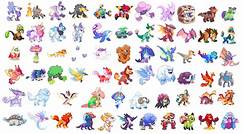What Does PET Plastic Mean?
PET plastic is a versatile material used in various applications, from food and beverage containers to clothing and carpets. But what exactly is PET plastic, and what are its properties? Let's take a closer look.

Properties of PET Plastic
1. Transparency: PET plastic is highly transparent, making it ideal for use in food and beverage containers. It allows consumers to see the contents of the container without opening it.
2. Strength: PET plastic is a strong and durable material, making it resistant to impact and wear. This makes it suitable for use in applications where durability is essential, such as clothing and carpets.
3. Lightweight: PET plastic is a lightweight material, making it easy to transport and handle. This is an important consideration for applications where weight is a factor, such as in the automotive and aerospace industries.
4. Recyclable: PET plastic is a recyclable material, making it an environmentally friendly choice. It can be recycled into new PET products or other useful materials, reducing waste and conserving natural resources.
5. Chemical Resistance: PET plastic is resistant to most chemicals, making it suitable for use in applications where exposure to chemicals is a concern. It is also resistant to weathering and UV light, making it suitable for outdoor use.
Applications of PET Plastic
1. Food and Beverage Containers: PET plastic is commonly used in food and beverage containers, such as bottles, jars, and trays. Its transparency and strength make it an ideal material for these applications.
2. Clothing: PET plastic is used in the production of synthetic fibers, such as polyester. These fibers are used to make clothing, carpets, and other textiles.
3. Medical Devices: PET plastic is used in the production of medical devices, such as surgical implants and disposable medical instruments. Its strength and biocompatibility make it a suitable material for these applications.
4. Automotive: PET plastic is used in the production of automotive parts, such as bumpers, fenders, and interior trim. Its strength and lightweight nature make it an ideal material for these applications.
5. Electronics: PET plastic is used in the production of electronic components, such as circuit boards and electrical insulators. Its electrical properties and chemical resistance make it a suitable material for these applications.
In conclusion, PET plastic is a versatile material with a wide range of applications. Its properties, such as transparency, strength, lightweight, recyclability, and chemical resistance, make it an ideal choice for various industries, including food and beverage, clothing, medical, automotive, and electronics.
Declaration: All article resources on this website, unless otherwise specified or labeled, are collected from online resources. If the content on this website infringes on the legitimate rights and interests of the original author, you can contact this website to delete it.




